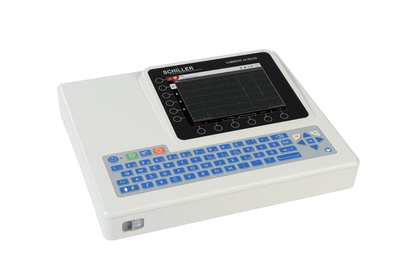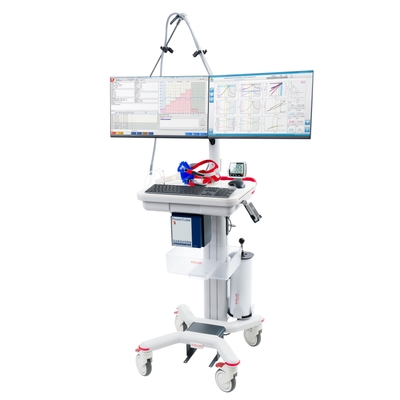
Medical rehabilitation ergometer ERG 911 comfor
- On order
Department specialist consultation
+38 (068) 165 87 94| Direction: | Rehabilitation |
|---|---|
| Producer: | SCHILLER |
| Country: | Switzerland |
ERG 911 comfor
The sitting ergometer was designed for very heavy patients weighing up to 200 kg. It is also intended for patients at risk, elderly or physically impaired patients.
FEATURES
- Two modes of operation:
- Remote control from a host device (ECG, PC, ...)
- Autonomous control via user-defined step protocol or manual load control - Rotatable screen
- Dimensions/base: 40 x 130 cm
- Weight: 68 kg
- Maximum patient weight: 200 kg
- Virtually silent mechanism thanks to a computer-controlled electromagnetic brake with
- continuous torque measurement regardless of the number of revolutions per minute.
Possible indications for ECG with load
- Diagnostic clarification of chest pain (angina pectoris, including vasospastic angina) in myocardial ischemia (insufficient blood supply) or coronary heart disease
- For patients with cardiac risk factors, such as suspected coronary heart disease and hypertension (high blood pressure)
- After a myocardial infarction to assess prognosis, physical activity, medical treatment and cardiac rehabilitation
- Before and after revascularization (restoration of blood supply) using interventional methods or coronary artery bypass grafting surgery to assess residual ischemia
- Assessment of exercise capacity, e.g. for expert reports
- Examinations of men over 40 years of age or women over 50 years of age who are asymptomatic before exercise
- For professions where the medical condition affects public safety (e.g. bus drivers, pilots, ...)
- For patients with cardiac arrhythmia that manifests itself only during physical activity (e.g. ventricular tachycardia in case of arrhythmogenic right ventricular disease, coronary heart disease)
- Exercise trials for patients with frequency-adaptive pacemakers to determine the ideal intervention frequency.
- Confirmation of undesirable proarrhythmic effects - increased arrhythmia during antiarrhythmic therapy
Indications for cardiac rehabilitation
- previous heart attack
- stable angina pectoris
- coronary artery bypass grafting
- cardiomyopathy
- PCI (percutaneous coronary intervention)
- compensated heart failure
- Maximum patient weight:200 kg
- Medical institutions
- Rehabilitation centers
.jpg)
